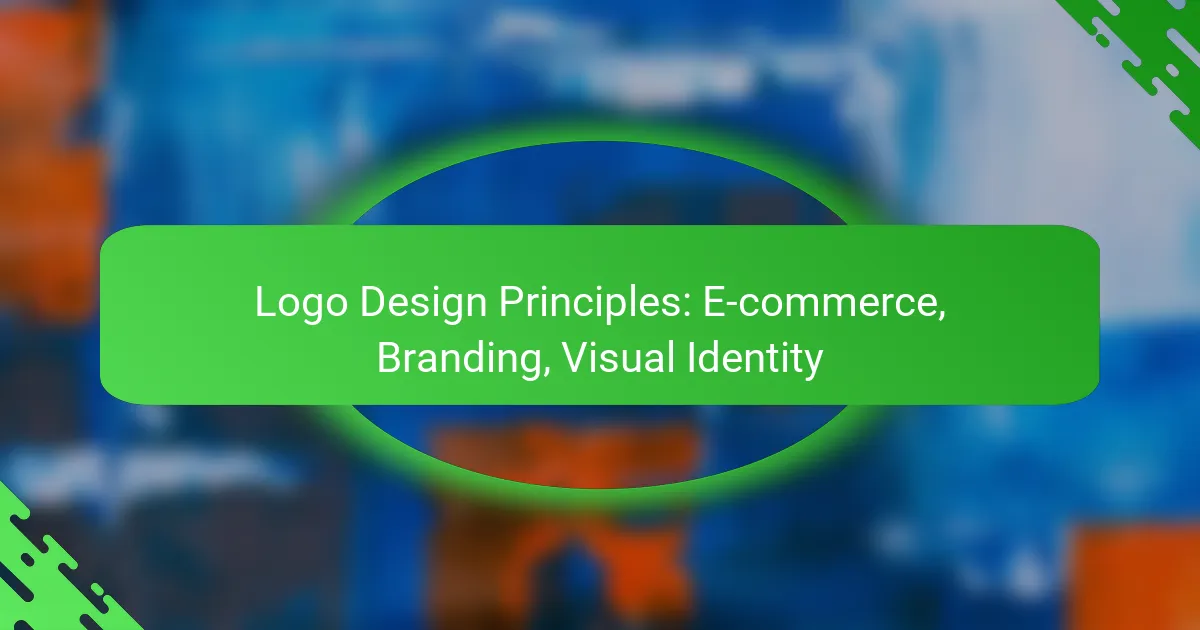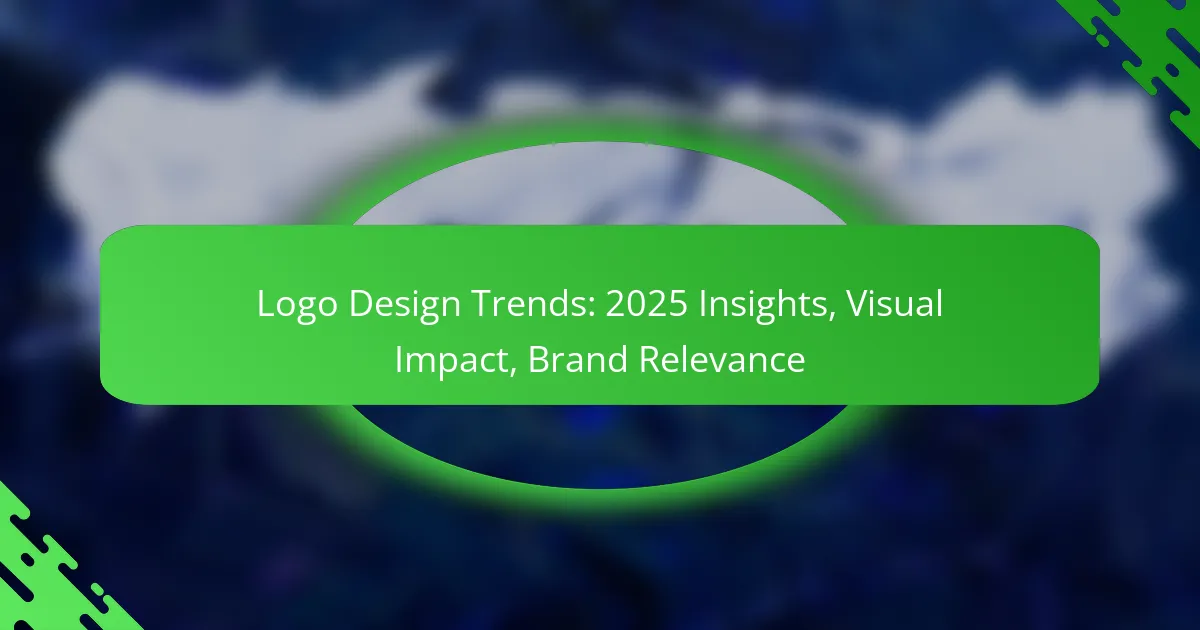Effective logo design is crucial for e-commerce brands, as it establishes a visual identity that resonates with customers and enhances brand recognition. A well-crafted logo should be memorable, versatile, and reflective of the brand’s values, serving as a recognizable symbol that helps consumers identify and remember the brand in a competitive marketplace.
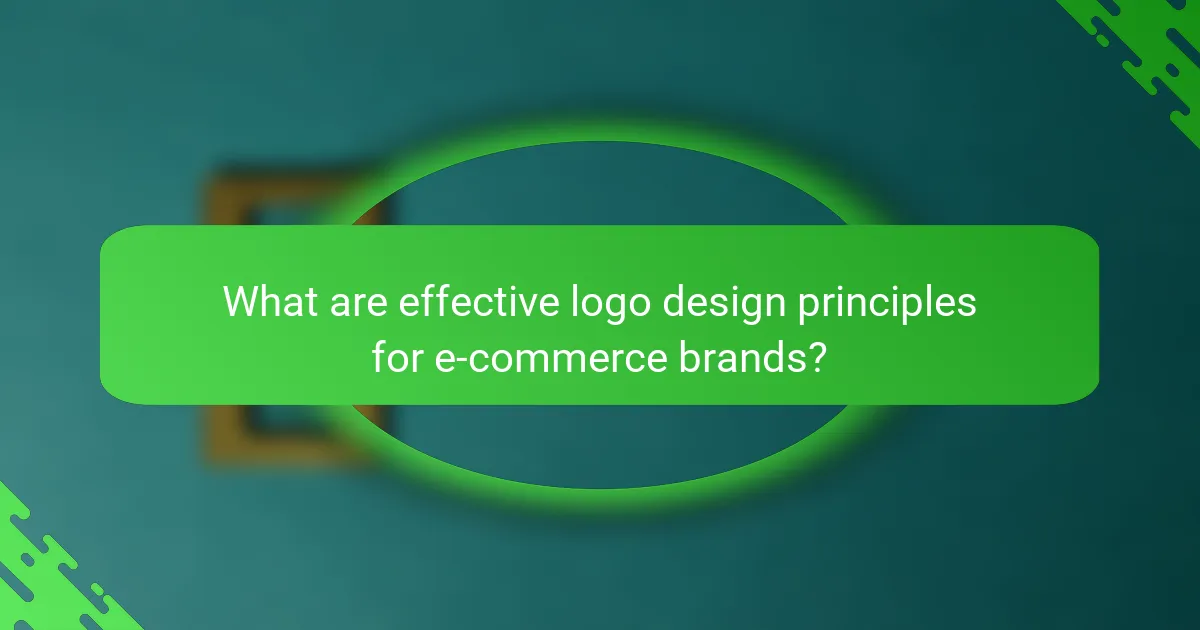
What are effective logo design principles for e-commerce brands?
Effective logo design principles for e-commerce brands focus on creating a visual identity that resonates with customers while ensuring brand recognition. A well-designed logo should be memorable, versatile, and aligned with the brand’s values and target audience.
Consistency in branding
Consistency in branding ensures that your logo aligns with other brand elements, such as color schemes, typography, and messaging. This coherence builds trust and recognition among consumers, making it easier for them to identify your brand across various platforms.
To maintain consistency, develop a brand style guide that outlines logo usage, color palettes, and font choices. This guide will help keep your branding uniform, whether on your website, social media, or packaging.
Use of color psychology
Color psychology plays a crucial role in logo design as different colors evoke specific emotions and associations. For example, blue often conveys trust and reliability, while red can evoke excitement and urgency, making it suitable for e-commerce brands.
When selecting colors for your logo, consider your target audience and the emotions you want to evoke. Aim for a color palette that not only reflects your brand identity but also resonates with consumer preferences in your market.
Scalability for various formats
Scalability is essential for logos, as they need to look good in various sizes and formats, from website headers to business cards. A scalable logo maintains its clarity and impact regardless of where it appears.
Design your logo using vector graphics, which allow for resizing without loss of quality. Test your logo in different sizes to ensure it remains recognizable and effective in both small and large formats.
Memorability and simplicity
A memorable logo is often simple and easy to recognize. Complex designs can confuse consumers and dilute brand identity. Aim for a logo that is straightforward yet distinctive, making it easy for customers to recall.
Consider iconic logos like Nike or Apple, which are simple yet instantly recognizable. Strive for a design that captures your brand essence without unnecessary details, ensuring it stands out in a crowded market.
Relevance to target audience
Your logo must resonate with your target audience to be effective. Understanding your customers’ preferences, values, and cultural context can guide your design choices, ensuring your logo appeals to them.
Conduct market research to gather insights about your audience. This information can inform your logo design, helping you choose elements that align with their expectations and enhance brand connection.
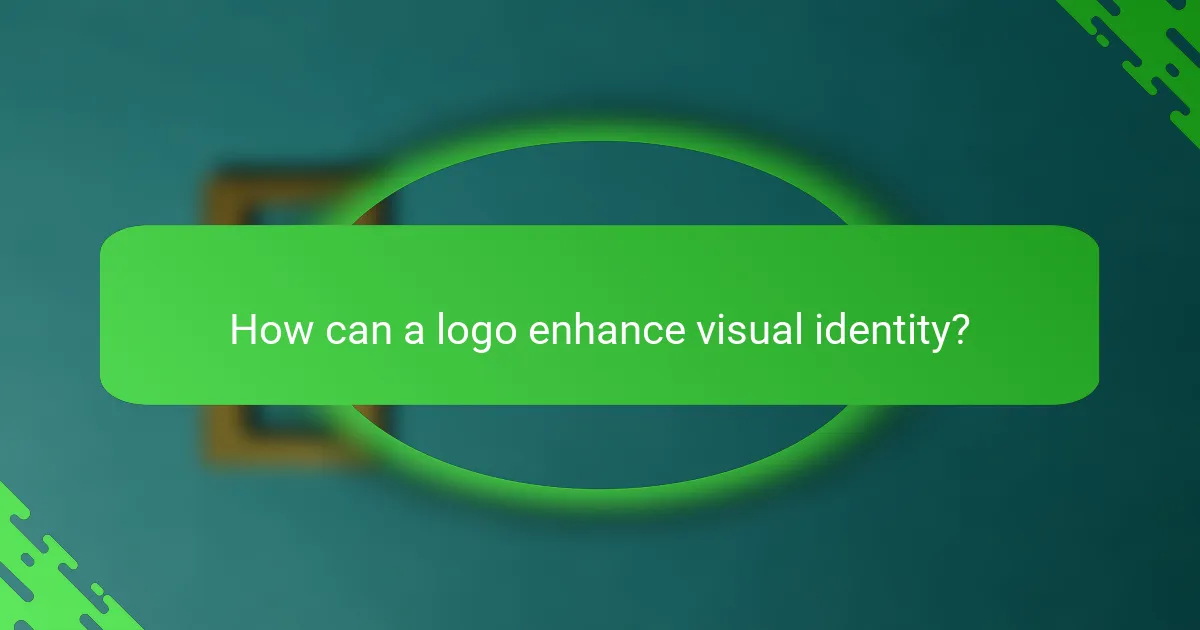
How can a logo enhance visual identity?
A logo enhances visual identity by serving as a recognizable symbol that encapsulates a brand’s essence. It creates a visual anchor that helps consumers identify and remember a brand amidst a crowded marketplace.
Establishes brand recognition
A well-designed logo is crucial for establishing brand recognition. It should be unique and easily identifiable, allowing customers to associate it with specific products or services. For example, logos like Apple’s apple or Nike’s swoosh are instantly recognizable and evoke strong brand associations.
To enhance recognition, keep the design simple and use consistent colors and fonts across all marketing materials. This consistency helps reinforce the brand in consumers’ minds, making it easier for them to recall the logo when making purchasing decisions.
Communicates brand values
A logo effectively communicates a brand’s values and mission through its design elements. Colors, shapes, and typography can convey messages about quality, reliability, or innovation. For instance, green often signifies eco-friendliness, while bold fonts may suggest strength and confidence.
When designing a logo, consider what values you want to express and choose elements that align with those ideals. This alignment helps create a cohesive brand identity that resonates with your target audience.
Creates emotional connections
Logos can evoke emotions that foster connections between the brand and its customers. A logo that resonates emotionally can lead to loyalty and trust, encouraging repeat business. For example, brands like Coca-Cola use their logo to evoke feelings of happiness and nostalgia.
To create emotional connections, think about the story behind your brand and how your logo can reflect that narrative. Engaging storytelling through visual elements can deepen the relationship with your audience and enhance their overall experience with your brand.
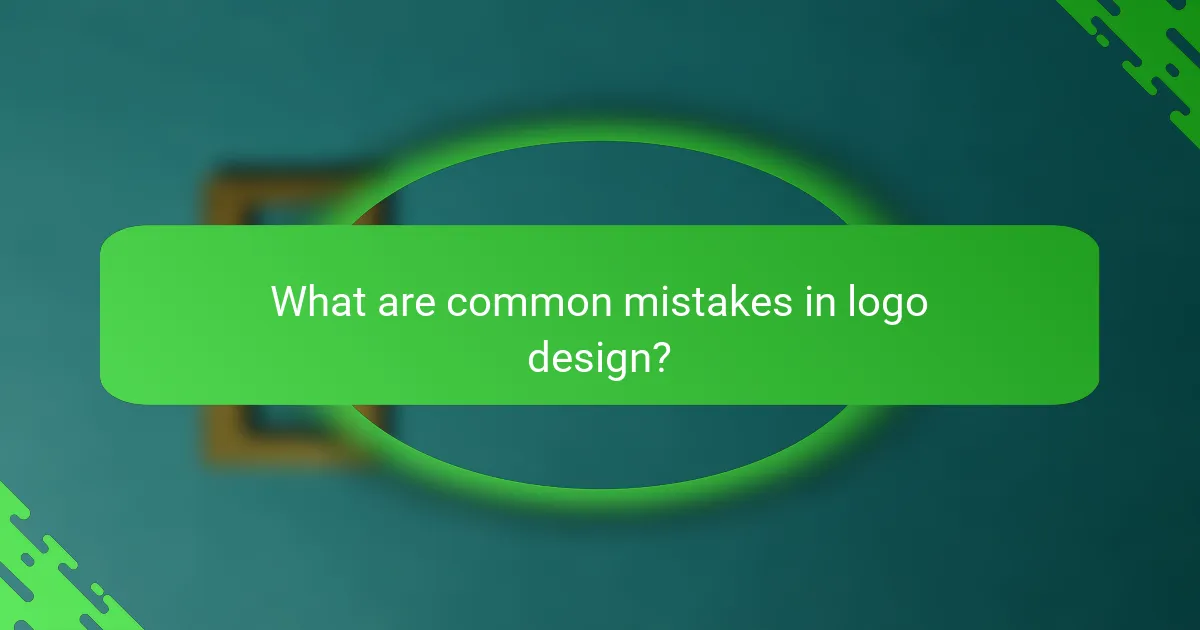
What are common mistakes in logo design?
Common mistakes in logo design include overcomplicating the design, ignoring target audience preferences, and neglecting scalability. These pitfalls can lead to logos that fail to communicate the brand effectively or resonate with potential customers.
Overcomplicating the design
Overcomplicating a logo can dilute its message and make it less memorable. A successful logo should be simple and easily recognizable, often utilizing minimal elements to convey the brand’s identity. Aim for a design that is clean and straightforward, avoiding excessive details that can confuse viewers.
For example, logos like Nike and Apple demonstrate the power of simplicity, relying on basic shapes and limited color palettes. As a rule of thumb, a good logo should be identifiable at a glance and scalable for various applications, from business cards to billboards.
Ignoring target audience preferences
Designing a logo without considering the target audience can result in a disconnect between the brand and its customers. Understanding the preferences, values, and aesthetics of your audience is crucial for creating a logo that resonates. Conducting surveys or focus groups can provide valuable insights into what appeals to your demographic.
For instance, a logo aimed at a youthful audience might incorporate vibrant colors and modern typography, while a logo for a luxury brand may favor a more classic and elegant design. Tailoring your logo to meet audience expectations can significantly enhance brand recognition and loyalty.
Neglecting scalability
Scalability is essential in logo design, as logos must function across various sizes and mediums. A logo that looks great on a website may become unrecognizable when scaled down for social media or printed on promotional materials. Ensure that your logo maintains its integrity and clarity at both small and large sizes.
To test scalability, create mockups of your logo in different contexts, such as on merchandise, digital platforms, and signage. A good practice is to design in vector format, allowing for easy resizing without loss of quality. This approach ensures your logo remains effective and visually appealing, regardless of where it appears.

What tools can assist in logo design?
Several tools can significantly enhance the logo design process, catering to different skill levels and design needs. From professional software to user-friendly platforms, these tools help create visually appealing logos that align with branding goals.
Adobe Illustrator for vector graphics
Adobe Illustrator is a leading software for creating vector graphics, essential for logo design due to its scalability and precision. It allows designers to create logos that maintain quality across various sizes, from business cards to billboards.
When using Illustrator, focus on mastering the Pen tool for custom shapes and the Color Guide for harmonious color schemes. Consider utilizing layers to keep your design organized and easily editable.
Canva for user-friendly design
Canva is an accessible design tool ideal for beginners and non-designers looking to create logos quickly. With its drag-and-drop interface and extensive library of templates, users can customize logos without needing advanced design skills.
To maximize Canva’s potential, explore its brand kit feature for consistent colors and fonts across your designs. Keep in mind that while Canva offers free options, premium elements may require a subscription or one-time payment.
Looka for AI-generated logos
Looka leverages artificial intelligence to generate logo designs based on user preferences and inputs. This tool is particularly useful for startups or small businesses that need a logo quickly without extensive design experience.
When using Looka, provide clear information about your brand’s style and values to get the best results. After generating logos, you can further customize colors and layouts, but be aware that high-resolution files may come at a cost.

What criteria should be considered when selecting a logo designer?
When selecting a logo designer, consider their experience, style, and ability to understand your brand’s vision. A good designer should not only have a strong portfolio but also be able to communicate effectively and adapt their style to match your brand identity.
Portfolio review for style alignment
Reviewing a designer’s portfolio is crucial for ensuring their style aligns with your brand’s identity. Look for previous work that resonates with your vision and the emotions you want your logo to evoke. A diverse portfolio can indicate versatility, but consistency in quality is key.
Pay attention to the types of logos they have created—whether they lean towards modern, minimalist designs or more elaborate, traditional styles. This will help you gauge if their aesthetic matches your expectations and the overall direction of your branding.
Additionally, consider the industries they have worked in. A designer experienced in e-commerce may better understand the nuances of online branding compared to someone focused on corporate logos. This experience can lead to more effective visual identity solutions tailored to your specific market.
